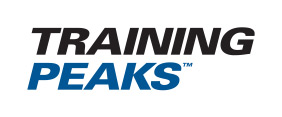Try it: Wall Float & Surface Push
Experience buoyancy and what it feels like to hold your body at the surface.
How to Do It: Wall Float
- Take a moderately deep breath and hold.
- Hook the tops of toes over the edge of the pool, feet held up out of the water.
- Float face down, relaxed, with arms down by sides.
- Hold still, hold breath, relax.
- When you need a breath, stop and stand up.
Now do it well:
- Be patient, relax and wait. Wait long enough for any bouncing/bobbing to subside.
- Look down.
- Play around, experiment. Patiently, make slight adjustments in head position and posture, to achieve a level, horizontal body position.
- Play with shoulders rounded versus fully retracted, before settling into neutral.
- Play with eyes looking forward, versus tucking chin allowing water to submerge entire head, before settling into neutral.
- Play with actively forcing your tallest posture, versus excessing slouching, settle into tall but relaxed postures.
Experience what happens to body position while approaching extremes.
- Once settled into neutral, feel for air on the back of head, shoulders, hips, and calves. Head, shoulders and hips should be crowning the surface of the water.
Next Step: Surface Push
- Start from a wall float.
- Patiently ensure you are level, head/hips/heels all crowning the surface.
- Allow feet to slip into the water, quietly and patiently maintaining head/hip/heel surface position, hold your breath, push off the wall.
- Glide just long enough to feel the loss of momentum and the corresponding loss of position, then stop.
- Repeat a few times.
More Advanced: Surface Push with Kick
- Add snorkel (fins optional), start with wall float and surface push. Add gentle kicks, focus on maintaining head/hip/heel surface position.
- Example Set: 16 x 25m surface push and kick with snorkel and fins, 5 seconds rest between.
Watch a video of a wall float here.
Modifications
All swimmers are different, if drill progressions aren’t working, don’t hesitate to use equipment and/or drill variations to experience what a buoyant body position is supposed to feel like.
- Snorkel: take time to notice how your breathing changes your buoyancy.
- Pull Buoy: instead of a ‘Wall Float’ use a pull buoy and float with feet near, but not hooked onto, the wall.
- Training Partner/Coach assist: your coach or swim buddy can hold your feet just below the surface, at the wall, with heels just breaking the surface, then release for the surface push.
Incorporate these stroke explorations by using this three week training plan. This plan includes warms up and nine progressive skill sessions to be used prior to a regular swim workout, as well as modifications for beginning, intermediate, and advanced swimmers. Ensure a solid foundation with video analysis and feedback, included with this version of the same training plan and improve your freestyle body position and technique for faster swimming during race season.
READ THIS NEXT: VIDEO: Shoulder Stability Exercises for Swimming
Laura Medcalf is a performance coach based in Vernon BC Canada, where she is head coach of the Tri Monsters Youth and Junior Squad, Lead Coach for the local swim club, as well as private swim and triathlon coach to many age group athletes.


